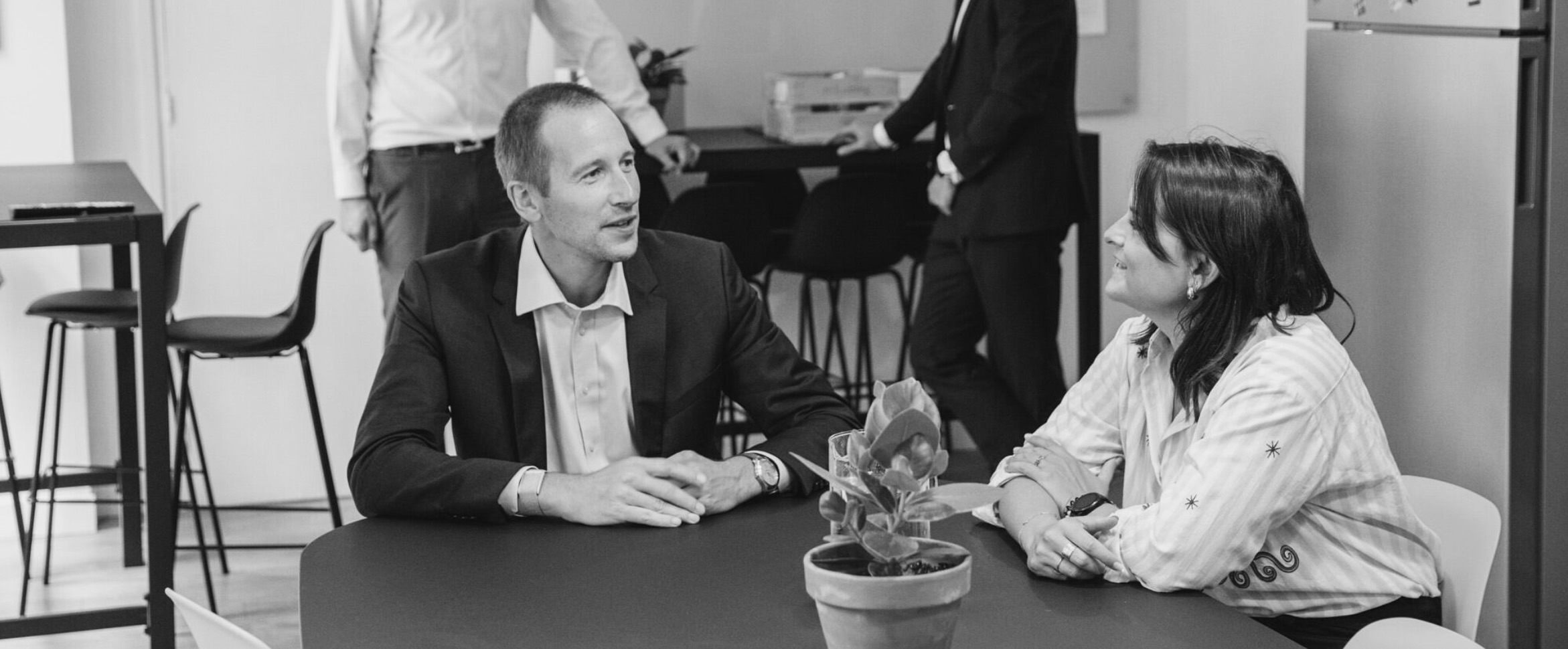Perceived as a driver of progress and often associated with disruption, innovation transforms industries, revolutionizes lifestyles, and redefines the boundaries of possibility. But beyond this, can innovation also create bonds within a team, an organization, or even society as a whole? To what extent does it act as a social glue, fostering connections, mutual inspiration, and shared belonging?
Between individualism and collective projects
At first glance, innovation often appears as an individual pursuit. Like Steve Jobs, Elon Musk, and others, the stereotype of the lone genius still dominates the collective imagination. These iconic figures seem like isolated visionaries who challenge the status quo to impose their singular vision.
This image hides a more nuanced reality: innovation cannot thrive without a collective capable of embodying, supporting, and spreading it. Societal transformations are the product of synergies and collective dynamics, where everyone contributes skills, ideas, and effort. Innovation is more a shared project than a personal adventure.
Collaboration, cohesion, and diversity
Internal and external collaboration is inherent to innovation. To find novel solutions to complex problems, people must work together, combining perspectives, experiences, skills, and know-how. Technical or organizational challenges require multidisciplinary teams, bringing together individuals with diverse expertise to explore new approaches. The exchange and recognition of different viewpoints naturally strengthen bonds among team members.
Agile methods provide a good example: they encourage transparency, responsiveness, and experimentation, relying on constant communication and strong interdependence within the team. This approach acts as a catalyst for unity: everyone feels involved, and their contributions are valued, even if the initial goal is not reached exactly as planned. Open innovation is another illustration: by extending collaboration to external stakeholders (clients, partners, academics), companies are pushed out of their comfort zones, consider other perspectives, and integrate ideas and expertise from elsewhere. It generates a form of cohesion that transcends organizational boundaries.
A factor of inclusion in a collective
Innovative approaches that value openness and collaboration give everyone the opportunity to reinvent themselves, develop new skills, and actively contribute to the collective benefit. Innovation thus becomes a factor of inclusion within an existing group.
By softening traditional hierarchies in favor of co-creation, these approaches can reveal hidden talents, as seen in intrapreneurship. Allowing employees from diverse backgrounds to propose ideas and develop them into concrete projects not only stimulates creativity but also breaks down silos and fosters a stronger sense of belonging.
The risks of fragmentation
Innovation can also divide rather than unite: like any change, introducing a new tool, technology, or method can generate resistance. Teams may fear for their jobs, feel that their skills are becoming obsolete, or be disoriented by practices that disrupt their habits. Automation, artificial intelligence, and robotics, for instance, raise legitimate concerns about the future of work. Without measures for inclusion, training, and dialogue, such innovations can create divides between “insiders” and “outsiders” to the change. In this case, rather than reinforcing cohesion, innovation becomes a source of fragmentation.
A vision… a project
To remain a factor of cohesion, innovation must be accompanied by a clear collective vision. Leaders play a key role in making it a unifying project. This requires establishing a framework where everyone feels part of the change, where individual contributions are recognized, and where diverse ideas are encouraged.
Collaborative innovation, which leverages collective intelligence, promotes cohesion through transparency, inclusion, and continuous adaptation. Transparency helps people understand why certain innovations are implemented and how they contribute to common goals. Inclusion ensures that everyone has a voice in the innovation process, regardless of their organizational status. Continuous adaptation allows for course corrections and integrates feedback from all stakeholders progressively.
From the company to the innovation ecosystem
Beyond individuals, innovation also acts as a factor of cohesion between groups of organizations, creating connected ecosystems. Innovation ecosystems are fluid, interconnected networks where everyone contributes, sharing not only resources but also knowledge, expertise, and vision.
These collectives, whether local, national, or international, foster the emergence of new ideas while strengthening cohesion among actors with sometimes divergent interests. In these networks, knowledge is shared, roles complement each other, and traditional boundaries give way to a common objective.
Social innovation: cohesion beyond the company
Social innovation provides another example of cohesion creation. In response to social inequalities, climate change, or migration crises, social innovations bring groups together around initiatives that positively impact the common good. Cooperatives, collaborative platforms, and civic projects show that innovation can indeed strengthen social bonds. By prioritizing horizontal dynamics and citizen participation, they demonstrate that innovation can cultivate solidarity and social cohesion, and that it is not solely the domain of the private sector—it can also emerge from grassroots initiatives and citizens’ needs.
Conclusion
Innovation cannot be decreed; it cannot be imposed, nor left to a few individuals. By establishing an inclusive, transparent, and collaborative framework, organizations and societies can make it a powerful lever for cohesion, bringing people closer together. The challenge lies in our ability to see it and use it not only as a driver of performance but also as a vector of belonging and collective fulfillment.





